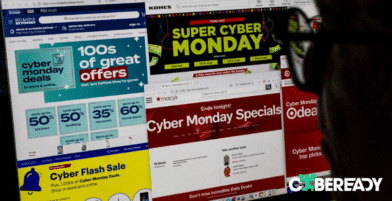
Far from being a mere compliance tick box, your company’s approach to data privacy has direct bottom-line effects. Research shows that 60 percent of users spend more money with the brands they trust to safely handle their personal data.
Suppose there’s one way to demonstrate to your customers that you have their best interests at heart in today’s data economy. In that case, it’s respecting the value of data privacy and being transparent about the use of personal information.
The National Cybersecurity Alliance’s (NSA) annual campaign affords companies a great opportunity to refresh awareness about data privacy’s importance and take further action to protect customers. Expanded in 2022 from a day-long event to an entire week, the NSA’s Data Privacy Week runs from January 22 – January 28, 2023.
Keep reading to learn more about Data Privacy Week and ten actionable tips to bolster privacy in light of the impending campaign.
What is data privacy week?
Data Privacy Week is an annual event to spread awareness about online privacy among individuals and organizations. First held in the United States as a day-long event in 2008, the campaign’s importance grew as the volume of data generated online about people and their activities exploded. The decision to expand to a week-long event reflects the perception that data privacy is a defining challenge in the digital age.
The event has international origins—The Council of Europe held its first Data Protection Day in 2006. Over 50 countries around the world host their own Data Privacy Day on January 28 each year. The theme for organizations in 2023 is to “Respect Privacy,“ which aligns with the increased concern individuals show about how companies use their data.
Why is data privacy week important for companies?
Data Privacy Week is important for companies because it refreshes the need for increased privacy protection in a world where the volume of personal data generated and collected about people online grows from more diverse touchpoints (e.g., IoT devices and smartphone apps). This campaign also reminds businesses about the customer trust and compliance benefits that arise when they take data privacy seriously.
10 Tips to Prepare for Data Privacy Week

1. Review your privacy practices, documentation, and systems
Hopefully, you have in place a valid privacy policy that outlines all the required practices, documentation, and systems needed to comply with any privacy regulations that apply to your business. The approaching Data Privacy Week is a good incentive to review all your systems and practices from a privacy perspective.
Focus on areas such as information retention, encryption for data at rest and in transit, customer/client onboarding, and the accessibility of your customer data policy. Make improvements if any gaps or shortfalls emerge that could put privacy and/or compliance at risk.
2. Know what data you are collecting and where it is
Part of the difficulty in protecting data privacy is the complex IT environments in which companies operate. Your business likely runs a hybrid infrastructure composed of cloud and on-premise systems. Among all this complexity, it can be tricky to identify exactly what data you’re collecting and where it ends up. Sensitive data is essential to identify and classify because if you don’t know where it is, you can’t adequately protect it.
3. Utilize cybersecurity awareness training for staff
It’s important to remember that cybersecurity only recently emerged from a somewhat low-priority business concern to its now central role at companies of all sizes. While each employee has a role to play in safeguarding systems and data, the onus is on companies to properly educate and inform people about cybersecurity practices.
Most companies understand that cybersecurity awareness is helpful, but their approach is often left wanting. Employees receive excessively lengthy materials once or twice per year and quickly forget what they’ve learned. A more effective approach to security awareness training should entail bite-sized learning that runs year-round with the ability to monitor progress and gain actionable insights.
4. Implement robust cybersecurity and privacy standards and practices
Often, previous mistakes are the true drivers of improved standards and practices in any industry. Consider how accidents regularly improve passenger safety in aviation through new, better ways of doing things. One upside of the many high-profile data breaches that have occurred in recent years is the emergence of more robust cybersecurity and privacy standards, frameworks, and practices.
Implementing one of these standards is a great way to strengthen cybersecurity and data privacy. Options to choose from includeISO 27000 Series, the CIS Critical Security Controls, and the NIST Cybersecurity Framework. Each of these standards and frameworks features extensive documentation that can improve how you protect customers’ data.
5. Control access effectively
Effective access control is one of the best ways to preserve the privacy of data. When organizations process and store personal data for particular purposes, the information resides in a database or application somewhere in their IT environment. Each user with access to personal data provides a potential route through which unauthorized personnel can compromise and even exfiltrate this information.
Any effective data privacy approach should use the least privilege access principle. This principle asks whether a given user requires access to particular data to carry out their daily work. If the answer is no, then the user doesn’t get access. Applying the least privilege principle reduces the risks of data privacy compromises.
6. Ensure passwords are strong
Often, you can trace breaches of personal data to a compromised account that hackers accessed by cracking a weak password. Automated tools enable cybercriminals to brute force into user accounts within a matter of seconds if those accounts aren’t guarded by complex passwords.
While methods like multifactor authentication can harden user accounts against compromise, it’s still pivotal to encourage people to set strong passwords. You might think that only privileged accounts with access to sensitive data require strong passwords, but this has limited efficacy. Technically adept hackers have many potential ways to escalate their privileges after compromising even a basic user account, so strong password security is paramount across your IT ecosystem.
7. Implement anti-virus and anti-spyware software
Anti-virus and anti-spyware tools are important technologies in protecting data privacy. Employees today get inundated with a barrage of phishing emails, often containing malicious code as attachments. Even visiting the wrong URL can lead to an automatic download of malware. This malicious code can facilitate remote access to systems and their data, or it can allow hackers to log employees‘ keystrokes and hack into systems.
Anti-virus and other anti-malware tools use databases and known signatures of malicious code to detect and remove malware from user systems. While not all malware is detectable by such software, not having it in place is a surefire way to unnecessarily risk a compromise of private customer information.
8. Apply privacy by design principles
Privacy by design principles build privacy concerns into the design of any technology systems, products, or services that require data processing activities. The idea here is to reduce the privacy risks that often arise when privacy is regarded as an annoying afterthought. Merely bolting on privacy features to an existing system is not only riskier, but it’s also more challenging.
When you apply privacy by design, you opt for the most secure communications protocols, put in place appropriate access controls, account for various attack vectors, and optimize storage requirements in line with how long you need or are allowed to retain personal data.
9. Implement device use policies
A device use policy puts in place rules and requirements that stipulate which devices employees, contractors, and business partners can access your IT infrastructure and how those devices may be used. These policies can reduce the risk of problems such as sensitive data downloads onto USB drives, unsanctioned mobile devices connecting to the network, or users connecting without Virtual Private Networks (VPNs) that encrypt their traffic.
10. Keep your customers informed about any customer data policy changes
Data Privacy Week serves as another useful reminder about the value of transparency. With customers increasingly hesitant to share information with companies, you can make your organization more trustworthy by being as transparent as possible. In particular, communicate any changes to your customer data policy in good time and in a transparent manner.
Transparent communication here means staying away from jargon, keeping the message brief, and providing a clear link where customers can read more about the full changes.
Make data privacy a year-round focus
Data privacy is not something you should just think about during campaigns like Data Privacy Week. A year-round focus on this critical business concern is imperative for retaining customer trust, complying with regulations, and keeping data out of the wrong hands. Shifting to this year-round focus calls for a cultural change in which data privacy lies at the heart of your company’s values and operations, from the top executive positions to the rest of your staff.
How CybeReady can help you prepare for Data Privacy Week
While all of the above tips can make a huge difference in how well you protect data privacy, human error plays a role in most breaches. Increasing cybersecurity awareness arguably has the biggest role to play in ensuring customer data stays out of the wrong hands.
CybeReady takes a unique approach to cybersecurity awareness by providing a fully managed and fully-automated solution that makes cybersecurity awareness training fun and engaging for employees. Employees receive regular training materials tailored to their role and location throughout the year for improved effectiveness. Performance monitoring via reports and dashboards makes it easy to track improvements in cyber awareness without the hassle of manual spreadsheets.



















